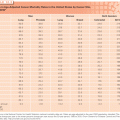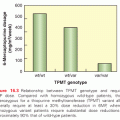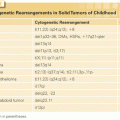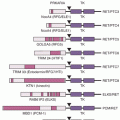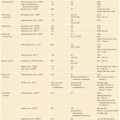!DOCTYPE html PUBLIC “-//W3C//DTD XHTML 1.1//EN” “http://www.w3.org/TR/xhtml11/DTD/xhtml11.dtd”>
The evolution of cancer care has led to survival advantages for many cancer patients. Some cancers, such as breast and colorectal, may be considered a chronic disease in many settings. Nonetheless, clinicians must be prepared for the specialized care for cancer survivors and those living with progressive cancer whose suffering is unique, complex, and multifaceted as described by Eric Cassel in his essay “The Nature of Suffering”.1 Now, recognition of the needs of patients has propelled the development of programs to provide concomitant palliative and supportive care with cancer treatment to help address the myriad concerns for both patients and their family and caregivers.
INTERDISCIPLINARY CARE FOR PATIENTS WITH ADVANCED CANCER
Specialized care for terminally ill cancer patients requires appropriate interdisciplinary care. Members of the interdisciplinary team (IDT) will include physician providers representing medical, surgical, and radiation oncology. Importantly, palliative medicine specialists, who work in tandem with nursing, social work, pastoral care, and other providers, can develop and lead integrated holistic care plans that reflect the goals of care and the values of patients.
Palliation is increasingly becoming recognized as an important component of care of the cancer patient for specialties treating cancer patients with advanced disease. In the terminally ill patient, chemotherapy, surgery, and radiation therapy may have the potential to provide palliation of symptoms and improve health-related quality of life (HRQOL) and extend survival. Decisions related to disease-modifying treatments must take into account the patient’s functional status, often as expressed by performance status, and the goals of care. The intent of treatments must be clear, because patients and families will often have unrealistic goals based on the potential outcomes for treatments offered.2,3
Clearly, all providers caring for patients with advanced cancer should work closely together to ensure that the patient and family are able to maximally benefit from our interventions while minimizing iatrogenic harm. Importantly, as death becomes more imminent, patients and families often benefit from the IDT support during this stressful time.
Recent studies of concomitant palliative care with standard oncologic care have demonstrated that patients with concomitant treatment had improved HRQOL, a reduction in symptom burden, and the potential to reduce use of aggressive treatment at end of life,4 while having an improvement in survival.5 Therefore, ideally, patients who present with advanced stage cancers and those experiencing progressive disease despite treatment will have access to concomitant palliative care early in their treatment course. This can allow for better support as described previously, but can make the transition from a focus on disease-modifying treatment to more symptom-focused care less jarring. This also recognizes that the complex issues of suffering with its physical as well as psychosocial and spiritual dimensions are most often present from the time of diagnosis and may vary in intensity and distress throughout the course of disease. Certainly, patients, families, as well as providers experience increased intensity of suffering near the end of life and practical expertise in the care of the dying is recognized as one of several important themes of care in order to achieve a “Good Death”.6 To do this, the team must engage in new types of conversations with patients and their families and among themselves and broaden their assessments to be able to ensure physical comfort, address psychological needs, and identify goals of care and social and spiritual sources of distress.
Communication skills are key for all providers to have successful interactions with patients and families. Communication skills can be learned and honed. Patient and family perceptions of quality and satisfaction with medical care are closely linked to the ability to effectively communicate the clinical situations, treatment options, and empathic support for all involved. There are a number of communication skill training programs, and all providers should work to continuously improve communication skills and consider specific training. When providers can communicate their clinical situation effectively with patients and families, they are better equipped to make decisions that focus on achievable goals of care in the terminally ill cancer patient.
SPECIFIC PROBLEMS IN THE SETTING OF ADVANCED CANCER
There are many specific issues that require attention in the terminally ill beyond pain and psychological distress. When patients present with these issues, the evaluation of the extent of disease, overall performance status, and treatment options may take some time to ascertain.
Aggressive palliative treatment of symptoms should be undertaken. At this point, discussions with the patient, their family or caregivers, and the medical team should then review the patient’s goals of care and align them with available treatment options. Some patients may opt for a more palliative focused approach, whereas others may choose, if potentially feasible, operative or interventional approaches. Patients must be supported in that interventions are not always successful to relieve symptoms, and the problem may recur. It may be difficult to weigh the risk and benefits of interventions. Involvement of the IDT is important because the patient will need support in the provision of complex medical information in such a way as to be able to make an informed decision. Regardless of the outcome of any intervention, the patient is likely to have a limited survival such that ongoing palliative/hospice support in the hospital or after discharge is needed.
Dyspnea, the uncomfortable sensation or awareness of breathing or needing to breathe (i.e., shortness of breath), is a commonly encountered symptom in cancer patients, which results from multiple disease processes and can lead to limited function and poor HRQOL. The prevalence of dyspnea among cancer patients has been reported to be between 21% to 90%, depending on the type and stage of cancer.7
The pathophysiology of dyspnea is multifactorial and incompletely understood.8 Researchers believe the cerebral cortex integrates this sensory input with other cognitive and emotional factors as well as motor information from the respiratory center.9
The gold standard for the diagnosis of dyspnea is the self-report of the patient. There are no other reliable, objective measures of dyspnea. Respiratory rate, oxygen saturation, and arterial blood gas determinations do not necessarily correlate with, or measure dyspnea. Hypoxemic patients may not be dyspneic, and those with dyspnea are often not hypoxic or remain dyspneic when hypoxemia is resolved. The severity scales developed for pain (numerical, visual analog scale) have been reliably used to assess dyspnea.10
The goal of the symptomatic management of dyspnea is to relieve the patient’s sense of breathlessness. Specific therapy to manage underlying causes (e.g., bronchodilators, stent placement to relieve focal obstruction), is appropriate in selected patients. To manage the experience of shortness of breath, both pharmacologic and nonpharmacologic interventions have been shown to be effective.
Oxygen supplementation has a perceived benefit by patients who are dyspneic that far exceeds the number who have hypoxemia.11 There is likely a placebo effect of oxygen, partially based on the medical symbolism inherent in its administration. It is recommended to use the least confining oxygen supplement possible for the comfort of the patient and the ability to communicate with the family. In the imminently dying, if the patient is comfortable with nasal prong oxygen, fans, and opioids, it is not necessary to monitor the oxygen saturation or escalate oxygen therapy for relatively asymptomatic hypoxia. It has also been observed that similar relief is experienced from cool air blowing on the face, such as from a breeze or a fan.
Opioids are the most effective medication for the symptomatic control of dyspnea.12,13 In opioid-naïve individuals, small amounts of morphine can relieve dyspnea.14 For those on baseline opioids, start by increasing the opioid dose by 25%.13 Patients frequently report anxiety concurrent with dyspnea, and these symptoms can reinforce each other. Dyspnea frequently leads to anxiety, and anxiety can also exacerbate dyspnea. Opioids alone may break the cycle by relieving dyspnea, but they do not have a direct anxiolytic effect. Anxiolytics (e.g., benzodiazepines) are frequently prescribed for anxiety related to dyspnea. However, when tested, the evidence for their effectiveness is not persuasive.15 Therefore, benzodiazepines should not be used alone as first-line therapy for dyspnea.
Malignant bowel obstruction (MBO) is defined as: (1) clinical evidence of a bowel obstruction via history, physical exam, or radiographic examination, (2) bowel obstruction beyond the ligament of Treitz, (3) intra-abdominal primary cancer with incurable disease, or (4) non–intra-abdominal primary cancer with clear intraperitoneal disease.16 It occurs most frequently with ovarian and colorectal cancers, but occurs with other abdominal and, occasionally, with nonabdominal malignancies. MBO may be related to tumor, its treatment (e.g., radiation enteritis), or benign etiologies (e.g., adhesions, internal hernia). The goals of treatment include relieving nausea and vomiting, allowing oral intake, alleviating pain, and permitting the patient to return to their chosen care setting.
When patients are admitted to the hospital, conservative measures (e.g., nasogastric tube, decompression, intravenous hydration, nothing by mouth [NPO]) is typically initiated. Palliative pharmacologic therapies have the goals of reducing intestinal inflammation and edema and/or controlling pain, nausea, vomiting, and dehydration. Pharmacologic options include: (1) antisecretory agents (e.g., somatostatin analog, steroids, scopolamine); (2) pain medications (e.g., morphine, fentanyl, hydromorphone, methadone); and (3) antiemetic therapy (e.g., haloperidol, prochlorperazine). Opioids act both directly to relieve pain related to intestinal obstruction, as well as to reduce painful bowel contractions against the obstruction. Antiemetics can be given through a variety of nonoral routes to control vomiting,17 although complete relief of emesis is achieved in a minority of patients through antiemetics alone. Hormonal manipulation of gut activity has substantially added to the armamentarium of MBO management. Octreotide, a synthetic analog of the gut hormone somatostatin, dramatically decreases gastrointestinal (GI) secretions and reduces bowel motility, often markedly reducing or resolving MBO symptoms.18 Duration of treatment may be short lived (median: 9.4 to 17.5 days),18 although symptoms are frequently relieved for the life of the patients. Anticholinergic medications, such as scopolamine, can decrease peristalsis and secretions and can lead to improved control of vomiting and intestinal colic for malignant GI obstruction. Although direct comparisons of these agents have not yielded clear recommendations,19,20 a combination of these medications may offer synergistic benefits. Finally, corticosteroids are commonly used as adjunctive agents or alone in MBO management, with the goals of decreasing tumor-associated bowel edema and of providing antiemetic benefits. Although a meta-analysis has suggested no statistical benefit of corticosteroid use, a subset of patients may benefit from them, and medication-related morbidity is low,21 particularly in patients in the terminal stages of their disease. If surgery is being considered, it has been shown that somatostatin or its analogs are likely not a risk to an operation. Steroids may carry operative risks and should be initiated with caution.
Persistent obstructions in the face of palliative treatments or evidence of complete obstructions are indications that a surgical procedure should be considered unless actively dying. Many patients are deemed inoperable (6.2% to 50%).22 This may be due to poor operative risk or contraindications to surgery. Poor operative risk must be assessed based on comorbidities (e.g., cardiac and pulmonary function), the amount and location of metastatic disease (e.g., overwhelming metastasis to the liver causing malfunction), and current functional status (e.g., Karnofsky score: <50%). Potential contraindications for surgery in patients with incurable cancer and MBO include ascites (greater than 3 L) and, in particular, ascites that rapidly recur after drainage, carcinomatosis, multiple obstructions, or a palpable intra-abdominal mass.17,23
The optimal procedure is that which is the quickest, safest, and most efficacious in alleviating the obstruction. Although bowel resection may lead to the best outcome,24,25 a bypass may be a safer option, and the placement of a gastrostomy tube for intermittent venting might be optimal in some settings. In addition, an intestinal stoma may be necessary after resection or to adequately bypass the blockage. Cytoreductive procedures (e.g., resection of an intraperitoneal tumor) frequently carry a high morbidity and usually are only considered with very low-grade tumors, such as pseudomyxoma peritonei.
Although it is recognized that improvement in HRQOL after surgery is variable (42% to 85%),22,26 there is no consistent parameter used to determine this clinical outcome; operations may offer an advantage of an increased survival. Surgical risks must be carefully considered prior to an operation, because morbidity (42%)27 and mortality (5% to 32%)22,25,27 are common, and the reobstruction rate is high (10% to 50%).22
Endoscopic procedures are suitable for patients who are poor operative candidates or who decline an open operative intervention. The major approaches include stenting and percutaneous endoscopic gastrostomy (PEG) tube placement. Stenting may include procedures to initially canalize the lumen (e.g., laser or balloon dilatation). PEG tubes are generally well-tolerated venting procedures that can alleviate symptoms of intractable vomiting and nausea for upper GI obstructions.28 A study from M.D. Anderson Cancer Center found that percutaneous gastrostomy tubes were utilized for palliation in 23% of small bowel obstructions in patients with advanced malignancy.29 Complications related to PEGs are rare, even when puncturing other organs.28 The presence of significant ascites is a relative contraindication. In combination with other medical techniques, both open and percutaneous gastrostomy offers the possibility of intermittent oral intake. Endoluminal wall stents have a high success rate for relief of symptoms (64% to 100%) in complete and incomplete colorectal obstructions,30 and in over 70% of upper intestinal malignant obstructions including gastric outlet, duodenal, and jejunal obstructions.31 Although risks include perforation (0% to 15%), stent migration (0% to 40%), or reocclusion (0% to 33%), stents can frequently lead to adequate palliation for long periods of time.30 Stent occlusion by tumor in-growth is usually amenable to another endoscopic intervention.
Malignant biliary obstruction is an obstruction of the biliary tract due to cancer. Malignancies associated with MBO are pancreatic cancer, cholangiocarcinoma (most commonly ampullary cancer, followed more uncommonly by lymphoma, duodenal cancer, and metastatic disease). Hyperbilirubinemia may become symptomatic, leading to pruritus, bleeding diathesis, and liver failure. Patients need prompt relief of the biliary obstruction before embarking on any other palliative treatments. Two major treatment approaches are currently available: (1) surgical bypass and (2) stent management (via gastroenterology or interventional radiology).
There are multiple studies comparing methods, especially stenting versus surgery.32 Endoscopic stenting has been shown to have similar success rates as surgery. Although most patients receive stents, recurrence rates are higher and subsequent hospitalizations may be lower for patients who have surgical bypass.32 Metal stents have improved patency compared to plastic stents with lower recurrent obstruction rates, although this may require a second procedure if not placed initially. One approach is to perform endoscopic stent placement in patients considered to have short life spans with a limited potential for recurrent obstruction and to perform surgical bypass for patients with less aggressive tumors, longer expected life expectancy, or limited access to endoscopic expertise for treatment of recurrent obstruction.
If the bile duct is entered via an endoscopic retrograde cholangiopancreatography (ERCP) but a stent could not be placed, it may necessitate a relatively urgent surgical procedure due to the potential cholangitis risk. If urgent surgery is not realistic due to patient comorbidities, overall status, or operating room availability, a transhepatic drain placed by an interventional radiologist is indicated. If a laparoscopic exploration is first undertaken for a potentially resectable mass and metastatic disease is noted, it is reasonable to abort the procedure with the hope that a less morbid endoscopic stenting can be accomplished. Also, if endoscopic stenting fails or is unavailable, an open or laparoscopic bypass is warranted. If, at open exploration, the patient is found to be unresectable, it is reasonable to proceed with a surgical bypass.
There are multiple options to surgically bypass the biliary system (e.g., cholecystojejunostomy, choledochojejunostomy, choledochoduodenostomy). The overall morbidity of surgical bypass is almost 20%, and the recurrence rate is 0% to 15%.32 It has been shown that choledochoduodenostomy has the fewest complications at only 3%.33 Of course, the ability to mobilize the duodenum may not be possible in all patients. A laparoscopic biliary bypass might be performed in expert hands.34
Gastric outlet obstructions typically occur in the setting of gastric, peri-pancreatic, and duodenal tumors. Procedures are considered in the setting of persistent nausea, vomiting, eructation, and early satiety. They also may be considered when there is evidence of duodenal compression on radiographic or endoscopic evaluations.
Although few centers have the technical expertise, endoscopic stents for gastric outlet obstruction may be quite successful (approximately 90%) with rare complications.35,36 In addition, if the stent fails due to tumor in-growth or migration (around 10%), another stent can often be placed.35,36
Another endoscopic option is percutaneous gastrostomy, with some centers reporting use in almost a quarter of their patients with gastric outlet obstruction and advanced malignancy.26
Stay updated, free articles. Join our Telegram channel

Full access? Get Clinical Tree


